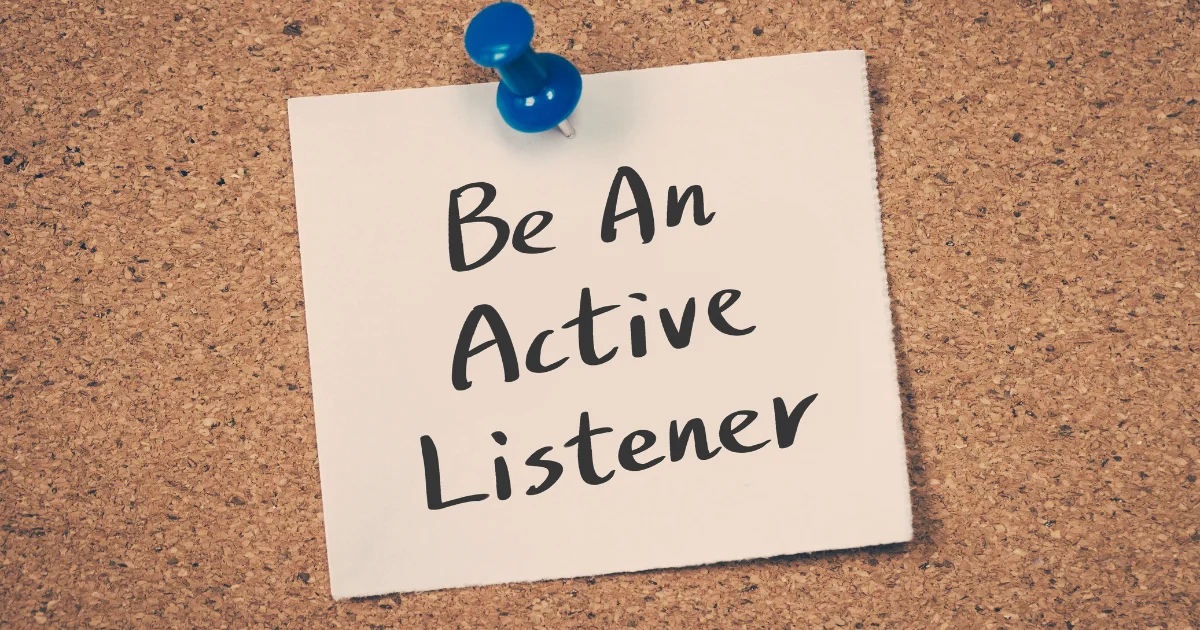Table of Contents
ToggleHello, wonderful learners and language enthusiasts! Teacher Kayla here, bringing you another dose of insightful tips and techniques to boost your English learning journey. Today, we are focusing on a skill that often doesn’t get the spotlight it deserves — active listening. Let’s uncover why it is a cornerstone in mastering English, especially for those who are at an intermediate to advanced stage and are looking to immerse themselves further in the language.
Becoming fluent in English is not just about expanding your vocabulary or mastering grammar rules. It involves tuning your ears to various accents, understanding colloquial phrases, and being able to comprehend and respond to fast-paced conversations. And here’s where active listening steps in, playing a vital role in reaching that next level of fluency.
The Power of Active Listening
Active listening is not merely a passive reception of words; it is an engaged process where you listen with the intention to understand and to learn. It’s a skill that empowers you to catch nuances, interpret emotions, and foster deeper connections through language. Let’s delve into how you can hone this superpower:
Tips to Enhance Your Active Listening Skills
- Diversify Your Listening Sources: From TED Talks to YouTube videos and audiobooks, varying your sources can expose you to different accents and styles of communication. Don’t shy away from genres like comedy shows or dramas, as they often present language in its most vibrant, natural form.
- Take Notes Efficiently: Develop a system for jotting down new terms and expressions. Create a dedicated notebook or a digital doc to track and review the unfamiliar words you encounter.
- Practice Paraphrasing: Once you’ve listened to a piece, try to paraphrase it. It’s a fantastic way to check your understanding and to reinforce the new phrases and vocabulary you’ve learned.
- Engage in Conversations: Find communities or social groups where you can practice listening and responding in real time. These settings provide a safe space to make mistakes, learn, and grow.
Overcoming Challenges in Active Listening
It’s common to encounter hurdles on this journey. The fast speech rate, colloquialisms, and diversity of accents can be challenging. Here’s how you can triumph over these barriers:
- Slow Down the Audio: Utilize tools and apps that allow you to slow down the speech rate, giving you the time to comprehend the material at your own pace.
- Watch with Subtitles: Initially, watching videos with English subtitles can aid in understanding the content better. Gradually, challenge yourself by removing them as you become more confident.
- Seek Feedback: Don’t hesitate to ask for clarification or feedback. Being curious and open to learning will foster rapid improvement.
Resources to Aid Active Listening
There are a plethora of resources available to assist you in this endeavor. Websites offering free audiobooks, platforms with English learning communities, and apps dedicated to language learning can be potent tools in your arsenal. Do your research and choose the resources that align with your learning style.
Conclusion
Active listening is not just a skill; it’s a bridge to deeper understanding and a more profound connection with the English language. It opens doors to rich, immersive experiences, aiding not just in language comprehension but also in embracing diverse cultures and perspectives. So, embark on this journey with patience and dedication. Keep your ears open, and let the world of English language unfold in its full splendor before you.
Exercises
- Objective: To expose students to various accents and styles of speaking.
- Task: Listen to short clips from different genres (news, comedy shows, TED talks, etc.) and note down any new phrases or words you come across.
- Objective: To expand vocabulary through active listening.
- Task: Create a personal dictionary where you note down new words, their meanings, and sentences using those words correctly.
- Objective: To enhance comprehension skills.
- Task: Listen to a short story or podcast and then paraphrase what you understood in your own words.
- Objective: To improve listening skills gradually.
- Task: Watch a video first with subtitles, and then without, noting the difference in your understanding.
- Objective: To practice real-time comprehension and response.
- Task: Join a language learning forum or group and engage in English discussions, focusing on understanding various accents and styles of speaking.
- Objective: To foster the habit of seeking clarification in conversations.
- Task: After a group discussion or listening to a dialogue, ask questions to clarify doubts and to ensure understanding.
- Objective: To learn to interpret emotions through verbal cues.
- Task: Listen to an audio clip and try to gauge the speaker’s emotion from their tone, pace, and choice of words.
- Objective: To understand content at different speeds.
- Task: Listen to a podcast at various speeds and note down how your comprehension changes with the speed of the speech.
- Objective: To find and share resources beneficial for language learning.
- Task: Research and find a resource (app, website, community, etc.) that aids in language learning and share it with your peers, explaining why it is useful.
- Objective: To track your active listening journey.
- Task: Maintain a journal documenting your daily listening experiences, the challenges you faced, and how you overcame them.
Unlocking The Transition Secrets with Teacher Kayla
Ready to delve deeper? Look no further! Join Teacher Kayla’s group classes where we unravel the deeper secrets to mastering smooth transitions in English speaking.
Our group classes are designed for intermediate to advanced learners, offering an inclusive and friendly learning environment where every individual’s learning pace is respected and nurtured.
Contact Me for Group Classes.
College Course Assistance Program
Embarking on a college journey and need a guiding hand to understand the course materials better? Teacher Kayla is here to help with the College Course Assistance Program.
This program is crafted meticulously to offer personalized guidance, support, and clarity when it comes to understanding your course materials. We are committed to helping you overcome the hurdles in your learning path and succeed in your academic journey.

